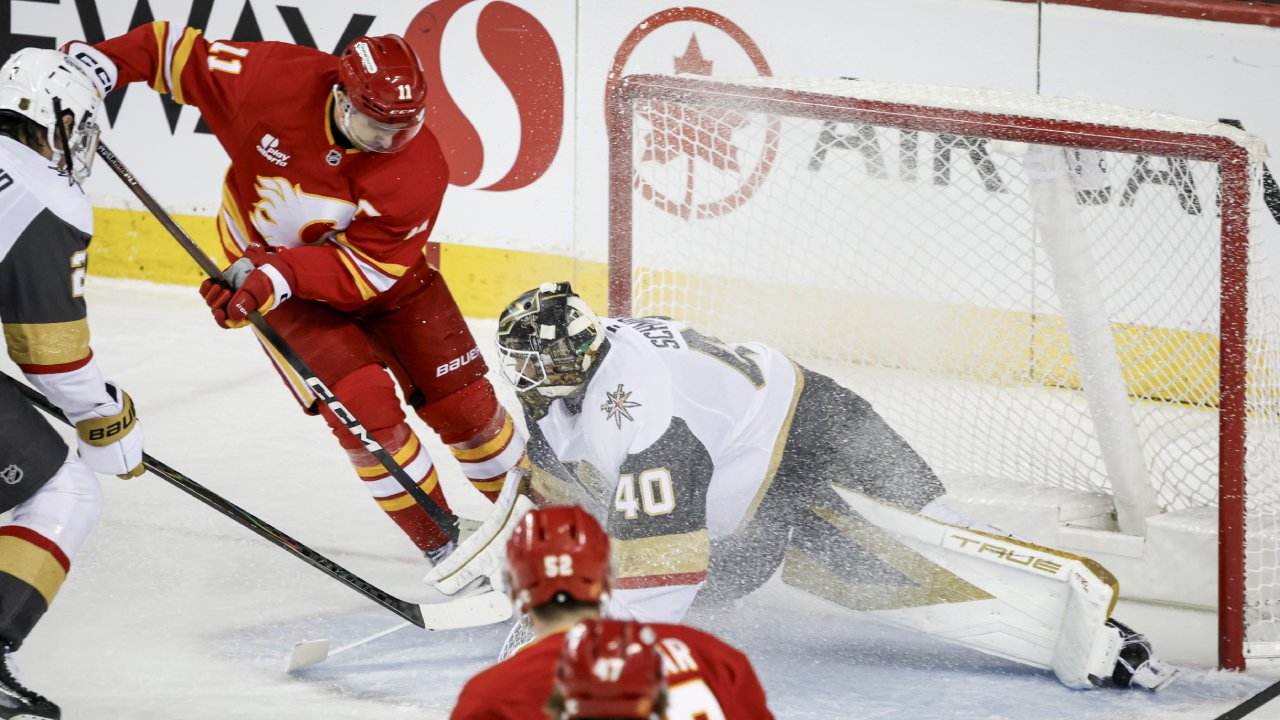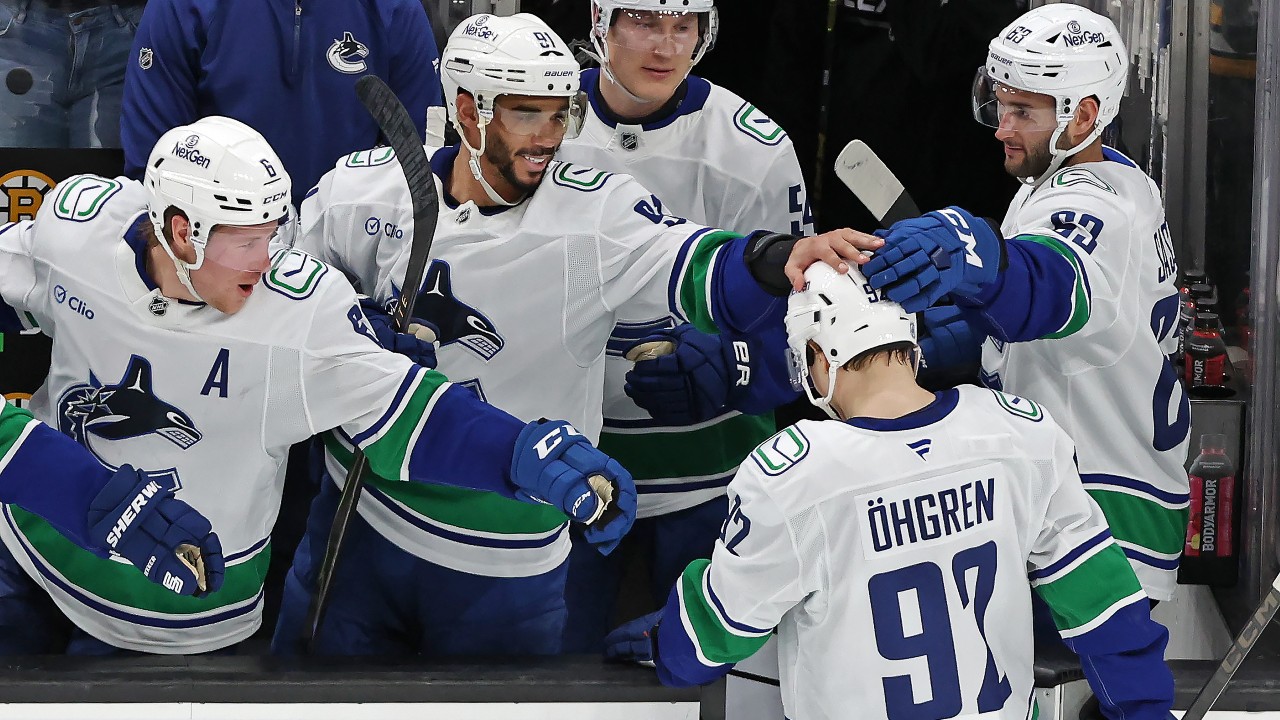
As if $2000 monthly payments to eight million Canadians hadn’t made him popular enough, Prime Minister Justin Trudeau has invited the NHL back to Canada.
After weeks of discussions between the federal government and the NHL over this country’s mandatory 14-day quarantine requirement for anyone arriving from abroad, Trudeau essentially gave hockey permission to return from the COVID-19 pandemic when he said Tuesday: “We have indicated that we are comfortable with moving forward on an NHL hub in one of three Canadian cities asking for it. Canada is open to it as long as it is OK’d by the local health authorities.”
Elected city and provincial officials supporting bids by Toronto, Edmonton and Vancouver to stage half of the 24-team Stanley Cup tournament the NHL is planning for this summer have already made it clear they are willing to work with hosts on guideline amendments that would allow entire teams to quarantine together in order to practise and train for hockey’s comeback.
A hub-city frontrunner from the start, Las Vegas is widely reported to be one of the tournament sites. The league would love to have the other in Canada.
Hockey may yet again bring us together, even if the bid selection has the potential to temporarily drive us apart.
From west to east, here is the three-horse field.
THE VANCOUVER BID
The best thing about Vancouver’s bid is that it is built around Vancouver hosting hockey games in the summer. In Vancouver. In the summer. And that B.C. has flattened COVID-19 better than most.
The city is one of the most beautiful on Earth and often shows up in player polls as a favourite road destination for NHLers. If players enjoy visiting Vancouver in November, wait until they see it in August when the rain finally stops for a few weeks and the mountains are as clear as the ocean. Players might like salmon fishing or paddle boarding as group activities on off-days. Vancouver’s bid is more than good looks and a nice tan line.
Rogers Arena is a good, albeit not great, tournament venue with four major-league dressing rooms. Back-of-house space in the arena is tight and the Canucks have no practice facility. The ice for training – three sheets at the University of B.C. or eight in suburban Burnaby – are short bus rides away. Each, however, has outstanding off-ice facilities. While the bubble separating players from public might be a little tight, the luxurious Douglas and J.W. Marriott hotels have 517 rooms between them and can be cordoned off with Rogers Arena, a two-minute walk away. There are a myriad of five-star restaurants in nearby Yaletown or right downtown that the NHL could commandeer.
B.C.’s chief medical officer, Dr. Bonnie Henry, who has become a local rock star, supports the Vancouver bid with her customary pragmatism. The province has the lowest COVID-19 death rate in North America and Europe among jurisdictions with at least 5 million people. The worst thing about the bid is that it’s in the Pacific time zone – the same as Las Vegas – and the NHL’s preference to spread television start times.
B.C. COVID-19 numbers: 11 new cases Wednesday, 54 cases per 100K during pandemic, 168 total deaths.
Pros: The city, stellar record vs. coronavirus, history of safely staging major events like the 2010 Olympics and 2015 FIFA Women’s World Cup, leisure options for teams.
Cons: Time zone, Rogers Arena’s cramped footprint, lack of dedicated practice facilities.
Quote: “It’s for the economy and the community (but) it’s even bigger than money. Right now, everybody needs something and we’re all searching for something that can make us feel better.” – Canucks COO Trent Carroll
Why Vancouver deserves it: Shouldn’t rich and famous, beautiful and healthy be enough? OK, the Canucks are the only NHL franchise that’s 0-3 in Stanley Cup Finals, their 50th anniversary was shredded by the coronavirus, and nobody will leave a Stanley Cup tournament in Vancouver and say “boy, the city sucked, wish we’d gone to Columbus.”
Fun fact about Vancouver: In 1975, the liberal weekly newspaper Georgia Straight hired a young Irish writer as its music editor. But Bob Geldof didn’t stick with journalism, went home to Ireland to form a band called the Boomtown Rats, and in 1985 organized a little charity concert called Live Aid that raised $300 million for famine relief in Africa.
THE EDMONTON BID
Edmonton has everything going for it but location, location, location. We know, Edmontonians don’t want to hear this. Most people living between the Ontario border and the foothills of the Rockies don’t want to hear that the grand Canadian prairies are somehow an impediment to nice things. How condescending. This is Canada’s heartland. And it’s not even February, although, for the record, I once covered a football game in Edmonton in July and it snowed. Whatever, it kept the mosquitoes down.
But there is an uncomfortable truth here. The NHL and its players association, which split hockey’s revenues 50-50, have to agree on hub cities, and when you’re talking about a potential separation from family for a three-month Stanley Cup tournament, there are places many players would rather be than Edmonton. (And please, for the love of god, stop touting the West Edmonton Mall. It’s not helping).
This said, Edmonton is a great city and Alberta in the summer is a different world than Alberta in the winter. Its generally moderate day-time temperatures pose no threat to ice quality, and Rogers Place already has about the best ice outside of Antarctica. The magnificent arena, coupled with the city’s impressive response to the coronavirus, is the strength of Edmonton’s bid.
Rogers Place is one of the top five buildings in the NHL. It has eight dressing rooms, plus additional team space at an attached community rink, and first-in-class broadcast facilities. There are plenty of options for practice ice nearby, and the Ice District built around Rogers Place includes the 346-room J.W. Marriott hotel and lends itself to the bubble concept the NHL desires to keep its players safe and separate from the general public. There also appears to be unrivalled civic support in Edmonton.
Alberta COVID-19 numbers: 29 new cases Wednesday, 170 cases per 100K during pandemic, 151 total deaths.
Pros: Coronavirus containment around Edmonton, Rogers Place, Ice District bubble.
Cons: Geography, the volume of luxury lodging required to accommodate 12 discerning teams, Mountain time zone only one hour ahead of Las Vegas, which is not ideal for the huge television audiences in the east.
Quote: “I think we are the safest place they could find in the continent to come and, in a very thoughtful and careful way, finish off the season with the playoffs.” – Alberta Premier Jason Kenney
Why Edmonton deserves it: Battered financially by the collapse of oil prices and feeling betrayed by the federal government and Alberta’s pipeline-obstructing neighbours in B.C., fans who are among hockey’s most ardent and loyal could use some good news.
Fun fact about Edmonton: The city has the world’s tallest cowboy boot, a 39-foot structure decorated with 600 feet of neon tubing in front of the One Stop Biker Shop west of downtown. Calgary is jealous.
THE TORONTO BID
Were it not for the quarantine conundrum in Canada, Toronto would have rivalled Las Vegas as a hub-city frontrunner from the start. And not just because it’s Toronto, although that helps. Scotiabank Arena is an excellent facility where dressing-room capabilities were expanded to accommodate the 2015 world juniors and 2016 World Cup of Hockey. Equally important, it comes with one of the best practice facilities in the NHL – the four-rink Ford Performance Centre that is a 15-minute drive away. Even with 12 teams in the hub, none would have to go anywhere for ice other than the main rink and practice facility, which simplifies health and security issues.
There is not an obvious “bubble” site around the main rink. But Scotiabank Arena, which is slightly separated from the highest density and bustle of downtown, is linked to the 541-room Delta hotel, while the five-star Ritz-Carlton and St. Regis, the most popular lodgings for NHL teams, are within a kilometre.
Toronto also has the significant advantage of being in the Eastern time zone. The NHL’s bid to identify two hub cities has become a such a popularity contest, with politicians happily wading in, that it’s easy to forget the entire Stanley Cup playoff initiative is a television event without any public access to games or practices. With one conference based in the Pacific time zone in Las Vegas, it makes sense that the NHL would like the other conference playing games three hours away, so that the largest TV audiences on the East Coast aren’t seeing both late games starting around 11 pm.
But beware, ongoing coronavirus concerns have kept the city in Stage 1 of the province’s re-opening plans.
Ontario COVID-19 numbers: 184 new cases Wednesday, 232 cases per 100K during pandemic, 2,550 deaths.
Pros: Arena and practice facility, Eastern time zone, breadth of luxury hotels and restaurants available, convenience of travel.
Cons: COVID-19 amid a dense population, less-focused bubble zone for teams.
Quote: “Toronto is the hockey capital of the world.” – Mayor John Tory
Why Toronto deserves it: Just ask them. It is a world-class city, ground-zero for the NHL and popular with players who will have vast options for activities during a three-month tournament. Plus, the Maple Leafs haven’t won a Stanley Cup since 1967 and if they somehow win one this summer, almost nobody will see it in person.
Fun fact: Babe Ruth hit his first home run as a professional – and only home run in the minors – at Hanlan’s Point in the Toronto Islands on Sept. 5, 1914. He pitched a one-hitter that day in a 9-0 win for the Providence Grays over the, wait for it … Toronto Maple Leafs. Long after the stadium was demolished, Hanlan’s Point became a clothing-optional beach, which we think the Babe would have enjoyed.







